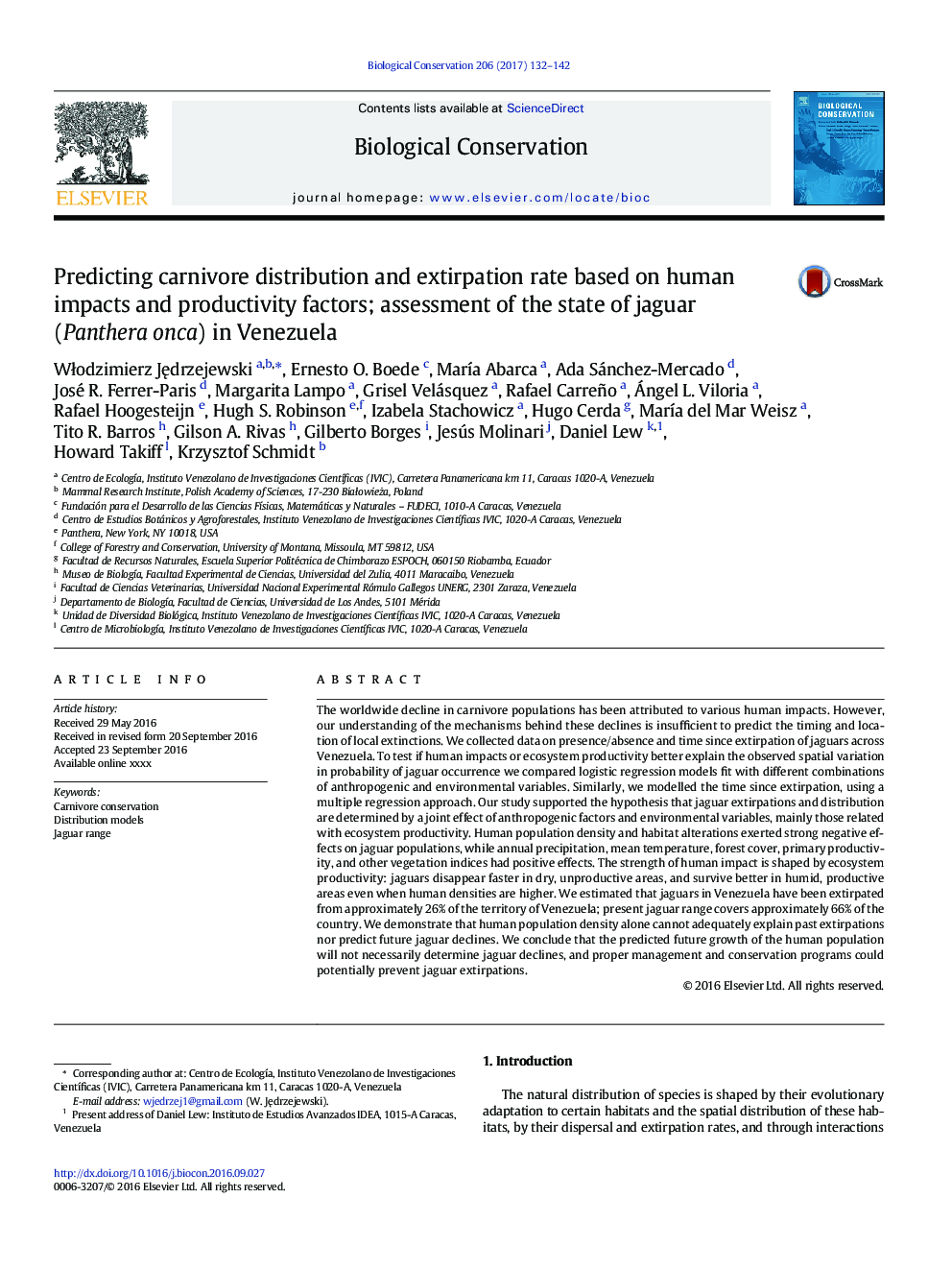| کد مقاله | کد نشریه | سال انتشار | مقاله انگلیسی | نسخه تمام متن |
|---|---|---|---|---|
| 5743276 | 1617896 | 2017 | 11 صفحه PDF | دانلود رایگان |
عنوان انگلیسی مقاله ISI
Predicting carnivore distribution and extirpation rate based on human impacts and productivity factors; assessment of the state of jaguar (Panthera onca) in Venezuela
دانلود مقاله + سفارش ترجمه
دانلود مقاله ISI انگلیسی
رایگان برای ایرانیان
موضوعات مرتبط
علوم زیستی و بیوفناوری
علوم کشاورزی و بیولوژیک
بوم شناسی، تکامل، رفتار و سامانه شناسی
پیش نمایش صفحه اول مقاله

چکیده انگلیسی
The worldwide decline in carnivore populations has been attributed to various human impacts. However, our understanding of the mechanisms behind these declines is insufficient to predict the timing and location of local extinctions. We collected data on presence/absence and time since extirpation of jaguars across Venezuela. To test if human impacts or ecosystem productivity better explain the observed spatial variation in probability of jaguar occurrence we compared logistic regression models fit with different combinations of anthropogenic and environmental variables. Similarly, we modelled the time since extirpation, using a multiple regression approach. Our study supported the hypothesis that jaguar extirpations and distribution are determined by a joint effect of anthropogenic factors and environmental variables, mainly those related with ecosystem productivity. Human population density and habitat alterations exerted strong negative effects on jaguar populations, while annual precipitation, mean temperature, forest cover, primary productivity, and other vegetation indices had positive effects. The strength of human impact is shaped by ecosystem productivity: jaguars disappear faster in dry, unproductive areas, and survive better in humid, productive areas even when human densities are higher. We estimated that jaguars in Venezuela have been extirpated from approximately 26% of the territory of Venezuela; present jaguar range covers approximately 66% of the country. We demonstrate that human population density alone cannot adequately explain past extirpations nor predict future jaguar declines. We conclude that the predicted future growth of the human population will not necessarily determine jaguar declines, and proper management and conservation programs could potentially prevent jaguar extirpations.
ناشر
Database: Elsevier - ScienceDirect (ساینس دایرکت)
Journal: Biological Conservation - Volume 206, February 2017, Pages 132-142
Journal: Biological Conservation - Volume 206, February 2017, Pages 132-142
نویسندگان
WÅodzimierz JÄdrzejewski, Ernesto O. Boede, MarÃa Abarca, Ada Sánchez-Mercado, José R. Ferrer-Paris, Margarita Lampo, Grisel Velásquez, Rafael Carreño, Ángel L. Viloria, Rafael Hoogesteijn, Hugh S. Robinson, Izabela Stachowicz, Hugo Cerda,